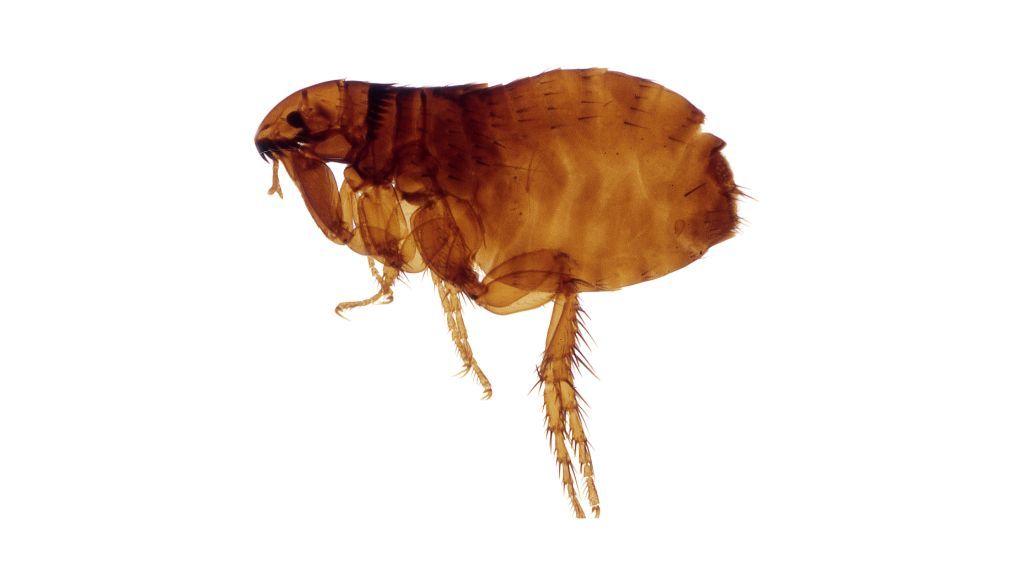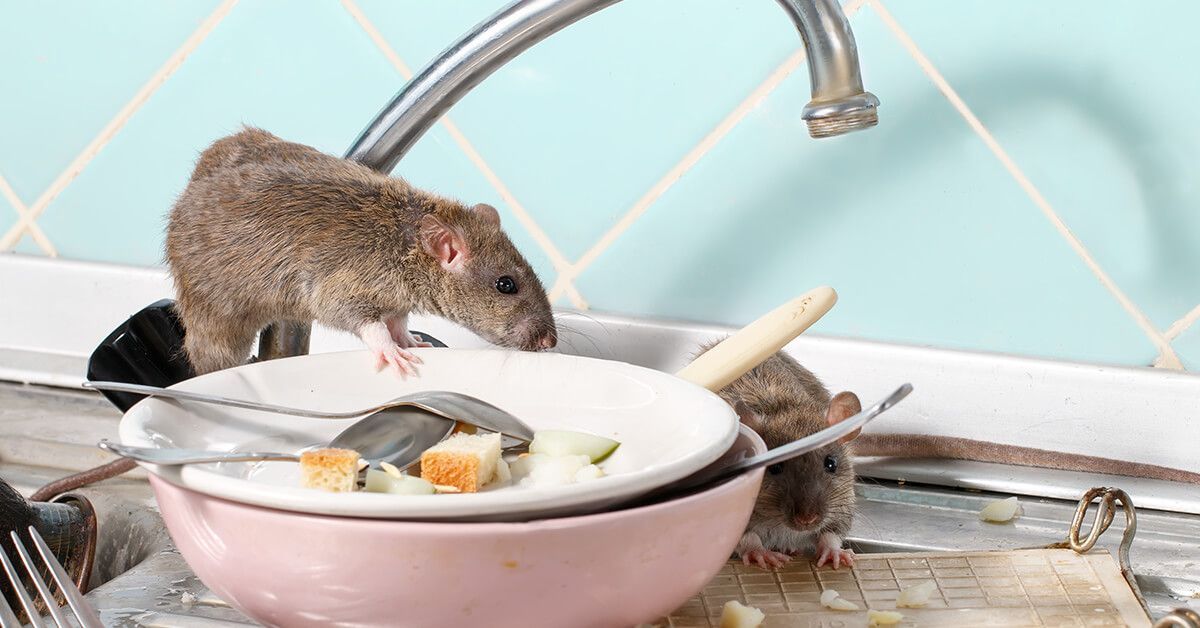Flea bites are often the first sign of an indoor flea infestation, but what do these bites look like? The size, shape, and distribution of the bites can help you determine whether fleas have invaded your home. The sooner you can identify a flea problem, the sooner you can evict these unwelcome pests and protect your family members (including pets!) from their itchy bites and health hazards.

Fleas, also known as Siphonaptera , are small insects that survive by drinking the blood of humans or other mammals. Most adult fleas are around ⅛ inch long. They have brownish-red bodies and are hard to the touch due to a strong exoskeleton.
There are over 2,500 species of fleas, but only some of them affect humans. The most significant in the United States are the cat flea ( Ctenocephalides felis) , ground squirrel flea ( Oropsylla montana), dog flea ( Cetenocephalides canis) , rabbit flea ( Cediopsylla simplex) , northern rat flea ( Nosopsyllus fasciatus) , and Oriental rat flea ( Xenopsylla cheopis).
Fleas are commonly thought of as tiny insects that jump or fly from place to place. In reality, fleas cannot fly because they have no wings. The idea that they supposedly fly comes from the fact that they can jump so far and so high at once—with each jump, they almost appear to be flying from place to place.
Fleas jump very quickly and have good agility, which means they are difficult to kill through manual means like stepping on them or squishing them. They’re also so small that they look like no more than a little black fleck, so trying to capture them could be an impossibility.
If you have fleas in your home, the solution is cleaning, sweeping, and using flea treatments regularly until the fleas, as well as their eggs and larvae, are wiped out.
What do flea bites look like? A single bite is normally small, red, and raised. It is similar to a mosquito bite because it may feel itchy or irritated. Generally, flea bites happen in groups of three or four (at a minimum) and affect the ankles and legs. The cluster can be from a single flea or multiple fleas feeding.
If you take a closer look at the bite, you may find that there is a lighter center and a “halo” of red around it. Additionally, the bite may be swollen. Flea bites are notoriously itchy, and they are prone to infection as a result of the bacteria introduced by the fleas themselves as well as from scratching. If you think you have a bug bite of any kind, whether a flea or another type, avoid scratching it to minimize the risk of a secondary infection.
Bedbugs and fleas both have a similar bite, which is why it can be difficult to know which kind of bite you have.
How Do They Look?
Flea bites are small, red, and round. They can look raised. Normally, they are clustered together in groups of a couple of bites, usually by threes.
What Are The Symptoms?
Symptoms of flea bites may include simple itchiness with raised bumps and more pronounced symptoms such as:
- Itchiness at the site of the bite
- Swelling around the bite
- Skin infections
- Hives
- Rashes
- Skin blisters
Bites usually resolve within a few days.
Where Are They Located?
Flea bites almost always happen around the ankles and feet, but some other places they can occur include the waist, lower legs, elbows, knees, skin folds, and armpits. Any exposed skin has the potential to be bitten by fleas.
How Do You Treat Them?
Flea bites don’t usually require treatment unless you have a severe allergy to them. In the case of itchiness or a mild rash, you can use antihistamines, anti-itch creams, or antibiotic ointments. For more serious issues, you may want to reach out to your primary care physician.
Are They Dangerous?
Flea bites can carry pathogens, but the bites themselves are rarely dangerous. Only infected fleas carry diseases like typhus or the bubonic plague.
Bedbug Bites
How Do They Look?
Bedbug bites are also small, red, and round. They are raised and tend to have a small, dark red spot in the middle. Bedbug bites are more likely to be in a line or cluster on exposed skin. They will often get larger when scratched.
What Are The Symptoms?
Bedbug bites are extremely itchy. People can be allergic to bedbug bites, but an allergy is rare.
Bites generally resolve within two weeks.
Where Are They Located?
Bedbug bites tend to be located on the upper body. They are most often found on the arms, hands, neck, and face.
How Do You Treat Them?
Unless you have a serious reaction such as blisters, hives, or a rash, you can normally treat the bites with simple over-the-counter antihistamines and anti-itch creams or lotions.
Are They Dangerous?
Bedbugs do carry pathogens
, but those normally do not transmit to humans.
After looking at a bite, you may still not be sure what kind it is. If you’re able to capture the insect, keep it in a sealed container and contact us a call at Local Exterminator . Our team is here to help you identify and manage pests of many types, so you can feel comfortable at home again.
The primary way you get flea bites is by being in an area where fleas are living. Whether outside in a moist, shaded area or inside where an infestation has taken hold, you can end up with bites if you’re around fleas at all.
Humans more often end up with flea bites because of being in close proximity to animals that can carry them. Sometimes, fleas get into homes because there is a larger infestation to deal with, like a rat infestation. Other times, pet dogs or cats that have not been given their regular flea medications end up bringing these pests into the house.
Adult fleas feed within a few hours of emerging from their cocoons. When a flea lands on you or your pet, it chows down as soon as it can. Female fleas need to have this first blood meal before they can lay eggs.
It takes only seconds to end up with a bite that will leave you or your pet itching for days. Since flea bites typically occur on the feet and ankles, one good way to minimize the risk of bites is by wearing socks and shoes. Unfortunately, flea bites can occur anywhere on the body since fleas can hide in furniture, carpeting, cracks in the flooring, and your bedding.
Unfortunately, if you’re getting bitten, it means an adult flea landed on you. While that doesn’t necessarily mean there is an infestation (it could have been a rogue flea), there could be enough adult fleas around to begin starting the circle of a flea’s life cycle again. Eggs, larvae, and pupae may be nearby.
If you have any questions about your health or your pet’s after flea bites, your first step is to talk to your general practitioner, primary care provider, or veterinarian. By doing so, you can start learning about the possible pathogens in your local area, if any, and get the treatment plan you need for yourself or your pet.
If you get a flea bite, you may not need to do anything in terms of treatment. Most flea bites resolve on their own within just a few days. If the bite is itchy or swollen, you can try ice, anti-itch creams and ointments, and antihistamines to reduce your discomfort.
If you start to have symptoms like a fever, body aches, headache, or allergic reaction, then it’s time to call your primary care provider or go to see a medical provider at a local urgent care or emergency room.
Since flea bites can be itchy, it may help to use anti-itch ointments or creams before covering the bite with a bandage. Doing this will help you avoid scratching the area open.
Once you take care of your bites, the next step is to take care of the flea infestation. Sweeping and vacuuming regularly is a must, as is washing all pets’ and persons’ bedding, rugs, and throws that may hold fleas or their eggs. You can often save considerable time and stress by contacting a pest control professional to eliminate the infestation as quickly as possible.
For DIY methods to
get rid of fleas
, consider:
- Sweeping regularly and throwing away the vacuum bag after each time to avoid additional fleas spreading in the home.
- Washing your bedsheets and other fabrics (or steaming those you cannot wash) to kill fleas at all stages of their life cycle.
- Steaming your furniture. Hot steam can kill adult fleas, larvae, and eggs.
Keep in mind that getting rid of fleas is rarely solved in one go. Vigilance is key to eradicating these pests. In addition to daily vacuuming and sweeping, it can still take a couple of weeks to completely eliminate fleas as new ones hatch.
Flea bites are annoying, but the good news is that you can minimize your risk of being bitten both inside and outside the home.
If you’re going to be outside, one of the best ways to avoid a bite is to use insect repellents proposed by the Environmental Protection Agency. Some of the most common options include:
- DEET
- Picaridin
- Oil of lemon eucalyptus
- IR3535
- 2-undecanone
- Para-menthane-diol
Each of these products may be used differently, so check the instructions on the container carefully. Some are sprayed onto clothing, while others may go directly on the skin.
Outside of using flea sprays and repellents, it’s a good idea to make a habit of covering your skin. When you’re hiking, in wooded areas, or will be in taller grasses, consider covering your skin with long-sleeve clothing. Wear high socks and long pants to minimize skin exposure. If you’re planning to touch animals you don’t know, whether sick or dead, opt to wear gloves. Nitrile gloves are easy to carry with you, or you can wear any gloves that offer some protection against directly touching the animal.
You can also choose to wear permethrin-treated clothing to help ward off bugs. There are treatment options for camping gear, clothing, and boots that can last through several wash cycles, so your clothes are ready to ward off fleas even when you head out at the last minute.
PLAGUE PREVENTION TIPS
If you live in a region where plague (with forms including the bubonic plague, septicemic plague, and pneumonic plague) is still active, it’s important to take flea infestations very seriously and prevent them whenever possible. If you are in an area where the plague is prevalent, take steps to minimize places where fleas and infected animals could hide. Some helpful ideas include getting rid of wood piles and making sure food supplies, like oats or corn, are sealed and rodent-proof.
You should also keep your pet out of endemic areas. If they have recently been to, or if you live in an endemic area, do not allow your pets to sleep in the same bed as you to minimize the risk of flea bites.
If your pet gets fleas and becomes sick, keep in mind that it could be carrying fleas with a dangerous pathogen (the plague is just one possibility). In that case, it’s a good idea to take your pet to the veterinarian for a diagnosis.
If your pet is
diagnosed with the plague, it may have symptoms such as:
- Pus-like lesions or inflamed lymph nodes (especially near the lower jaw)
- Cough
- Fever
- Lethargy
Cats are more likely to show signs of infection than dogs (thanks to dogs’ resistance to the bacteria), but both may develop one of the three forms of the plague, either bubonic, septicemic, or pneumonic.
Humans exposed to the plague should seek ou immediate medical attention. Currently, there is no plague vaccine available in the United States.
When we hear that our neighbors are dealing with pesky insects that leave them with uncomfortable bites, we’re ready to do anything we can to help. At Local Exterminator, we can help identify the source of common bites and assist you with getting rid of them. Our field experts are trained in pet- and family-friendly flea treatment methods, you can say goodbye to fleas and regain your peace of mind as quickly as possible.




